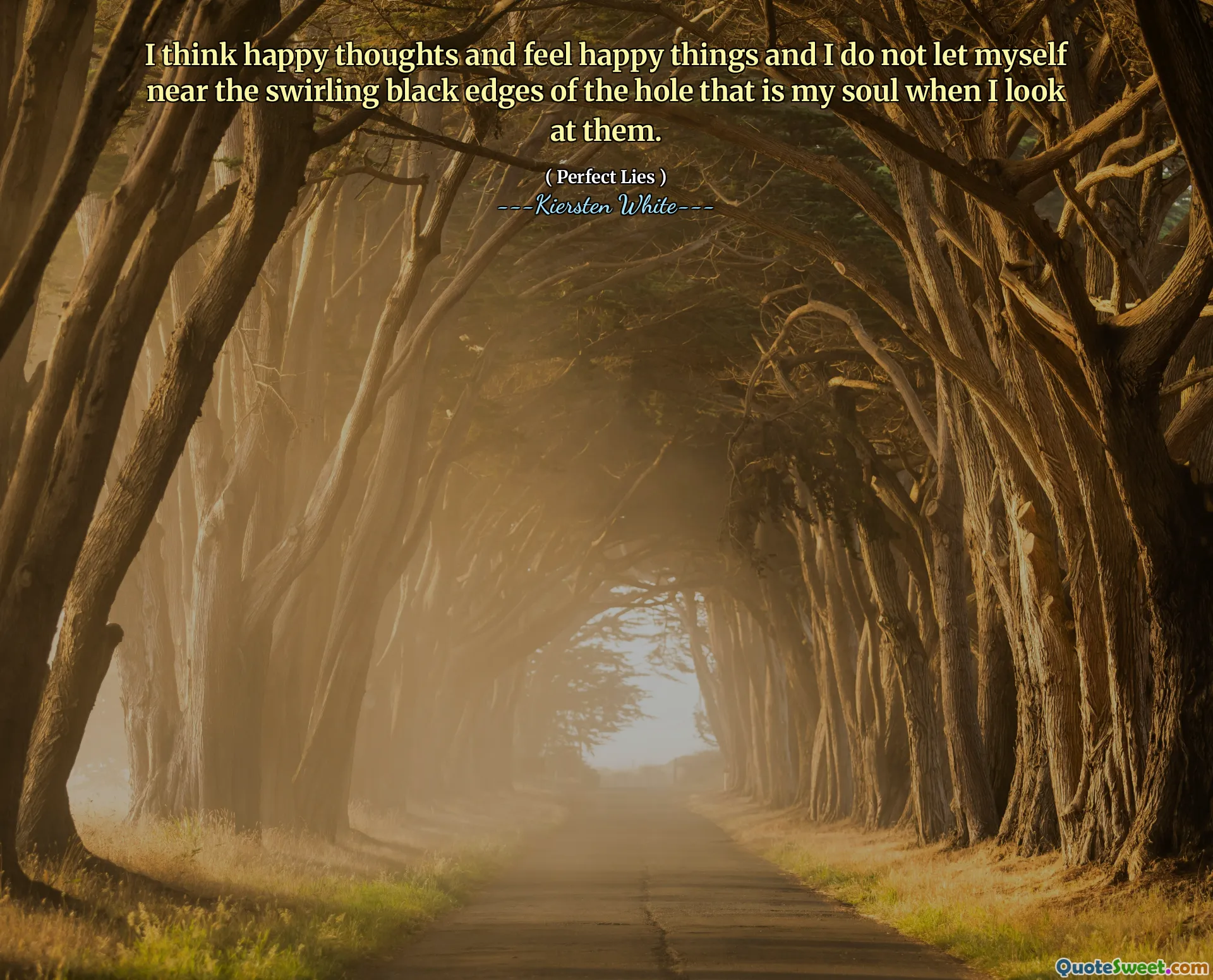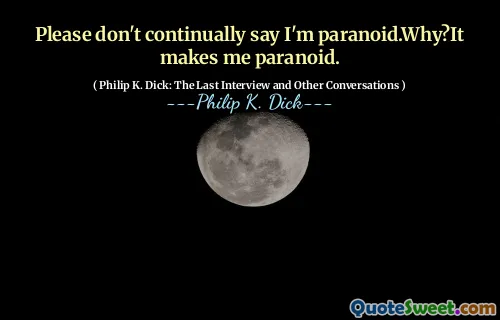
I think happy thoughts and feel happy things and I do not let myself near the swirling black edges of the hole that is my soul when I look at them.
This quote conveys a deep and poignant struggle within the speaker's inner world, where a conscious effort is made to focus on happiness while simultaneously avoiding confronting a darker, more painful core. The imagery of "swirling black edges of the hole that is my soul" evokes a sense of profound emptiness or torment that the speaker feels when facing their own vulnerabilities or regrets. This is a powerful illustration of emotional self-preservation—choosing to direct attention toward positive feelings rather than allowing oneself to dwell in despair. The act of consciously "thinking happy thoughts and feeling happy things" implies resilience, a deliberate mental stance to protect oneself from the threatening emotions that lie just beneath the surface. However, there is an underlying sadness that shadows this effort. It implies that the speaker’s happiness is, in a sense, fragile, attained only through avoidance rather than resolution of their internal turmoil. The quote also highlights the complexity of the human psyche—happiness and darkness can coexist within, and managing that coexistence often requires conscious strategies. Moreover, the mention of the soul suggests that this darkness is not superficial but fundamental, a core part of the speaker’s identity that they choose not to confront fully, perhaps out of fear or pain. This brings forth broader reflections on mental health, emotional repression, and the ways we all attempt to shield ourselves from internal darkness. Ultimately, it is a beautifully honest glimpse into the difficulty of maintaining joy when trouble lurks so close beneath the surface.


